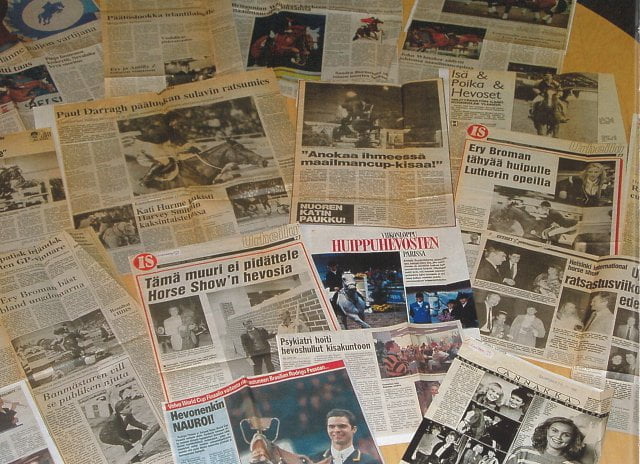This is where it all started: The first Helsinki Horse Show in 1985 at the Helsinki Expo Centre was a dream come true, the realisation of a dream castle and a great success. 10 000 visitors enjoyed a new kind of international glamour in equestrian sport. The world’s best riders came to Helsinki and were thrilled by the event. For the second year running, Helsinki was awarded the prestigious World Cup status, the Volvo World Cup.
We had a crazy idea: we wanted to create the best indoor competition in the world, nothing more, nothing less. We didn’t start cautiously; instead, we set the bar at the highest possible level. In everything we did, only the best would do.
– Excerpt from the Horse Show book Memories Through the Years
The first year was a perfect success. The experience of success was great. Foreign riders still talk about the first Helsinki Horse Show.
However, the first year was a loss-making one, which is not surprising, as the first year is always difficult. The way forward was therefore clear. It was necessary to continue in order to cover the losses. The losses were known and the budget was maintained in the following years by making up for them.
The first year was so successful that riders, led by David Broom, strongly demanded a World Cup event in Helsinki. The Helsinki Horse Show convinced the FEI, the World Cup series Max E. Ammann and Volvo. Since 1986, the Helsinki Horse Show has carried the World Cup status with honour.
“Friendly Helsinki” is a concept well known to the world’s top riders. Riders, grooms and horses have been well looked after, and all have had a great time at the Helsinki Horse Show.
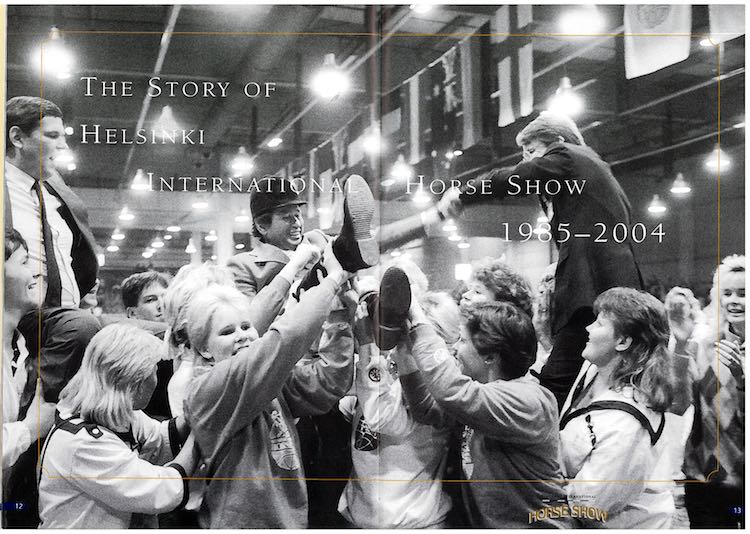
Hugo Simon, a crowd favourite, being handled by enthusiastic volunteers (photo from the Horse Show’s book Memories Thorugh the Years)
In the first year, there were around 250 volunteers, rising relatively quickly to between 350 and 400. The Horse Show is now one of the largest volunteer organisations among World Cup competitions. The reason for the large number is that the event is basically double occupied. Volunteers spend half their time working on the project and the other half watching the event.
The Horse Show still has volunteers who have been involved every year since the very first Horse Show. One of them is Reija Liusvaara, a true Horse Show superwoman. Reija is the “mother” of the volunteers, responsible for keeping the multi-hundred-strong team of volunteers together, informed, equipped and satiated.
Every time I do something, I want to succeed, and I want to feel good about what I've done. I want everyone to feel good.
– Reija Liusvaara
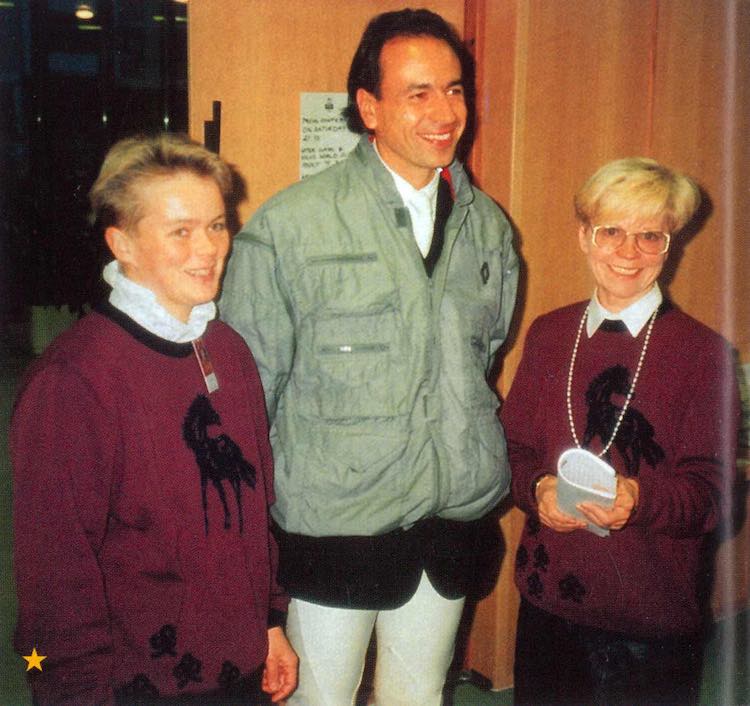
Reija Liusvaara, Olympic champion Pierre Durand and press officer Maija Koski. Photos from the book Helsinki International Horse Show – Memories Thorugh the Years
Horse Show developed and grew in all sectors until the recession of the 90s. The event kept attracting new riders, the budget grew, the prize money increased and the crowds grew. It was a real boom, as it was in Finland.
The recession hit the Horse Show with a delay. The years 1992-94 were the most difficult, with the worst situation nationwide occurring earlier. By all rights, the competition should have collapsed, building on the tremendous boom of the 1980s. But this was not the case, and the recession did not reflect on the outside world. Despite all the misery, this one weekend of festivities managed to survive an otherwise drab everyday life.
The only place where the recession was visible was at the expo. In 1992 there were far fewer expo visitors than normal and it showed in the empty halls. The following year, the situation was resolved by abandoning the facilities that had been extended in 1990.
The aftermath of the recession was a period of preparation for the 1998 World Cup final.
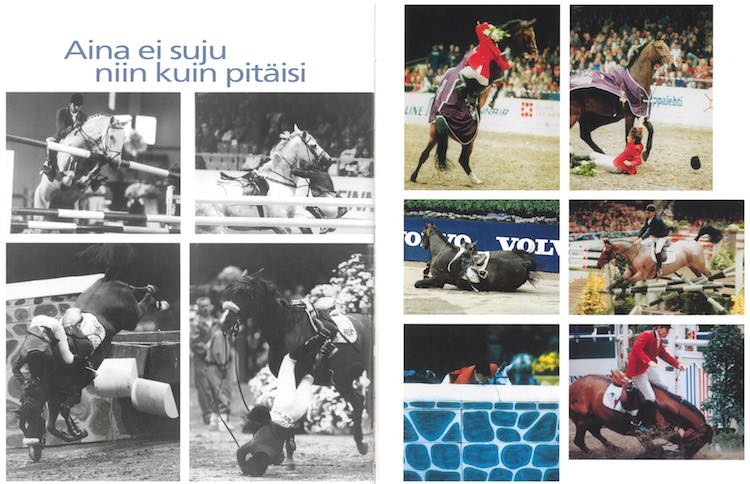
Photos from the book Helsinki International Horse Show – Muistoja Vuosien Varrelta
Helsinki Horse Show applied for the 1998 World Cup Final and won a close vote against Canberra, Australia.
The previous autumn, the event was moved from Helsinki Expo Centre to Hartwall Arena for the final. The Horse Show lasted five days during the finals. The Horse Show has never been five days long, except now in 2017, for the first time since the Final.
During the final, the Horse Show attracted a staggering 56 000 visitors, and a fierce snowstorm did not prevent the magnificent final from taking place.
The final was won by the legendary Rodrigo Pessoa, for whom this victory was the road to the top of the world. His triumphant career has continued to this day.
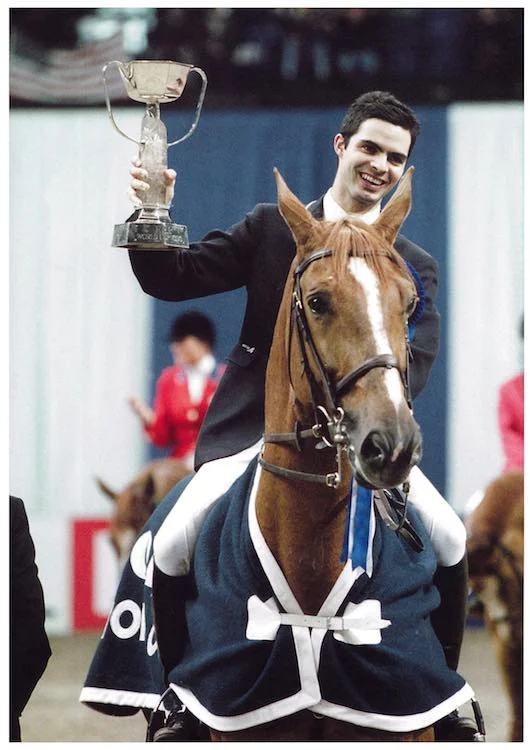
Rodrigo Pessoa & Baloubet du Rouet. Photo from the book Helsinki International Horse Show – Memories from the years
The Helsinki Horse Show has always been about much more than just hard sport. No wonder that the slogan “great emotions and experiences” is alive and well at the event.
Over the years, the Helsinki Horse Show has retired some great horses. The first Horse Show’s most touching moment was when Hugo Simon’s Answer was retired on the final day of the show. Simon arrived with Answer, who has 68 wins in demanding international competitions, and a wreath was placed around the horse’s neck. Simon gave a touching tribute to his racing partner and the horse was then given a well-deserved retirement.
Another horse honoured at the Horse Show with his own farewell ceremony was Monday Morning, who retired in 1988. The horse was exceptionally successful in Finland. His best performances include 12th place at the Moscow Olympics under Christopher Wegelius, but also numerous Finnish Championships, Finnderby wins and international placings under Tom Gordin. When the horse was unsaddled and led out of the arena at the ceremony, it seemed as if he realised that his career as a racehorse was over.
In 2015, Eevamaria Porthan Broddell’s well-earned horse Solos Lacan retired. The ceremony was emotional and tears were shed. Solos Lacan was stripped of his saddle and bridle, after which Nipsu mounted the horse for the final lap of honour, with only a rhyme.
It’s not just horses that have been retired at the Horse Show. The 2003 Horse Show was Hugo Simon’s farewell competition. Hugo Simon participated in the Horse Show in his first year and competed in Helsinki for ten years. When the officials carried Hugo out of the Arena in a golden chair to the accompaniment of “Simply the Best”, the legendary star’s appearances in Helsinki came to a magnificent end.
The Horse Show was one of the first sporting events in our country to introduce the VIP Hospitality customer management system, which was already well established in Europe. Since the first year, companies have used the Horse Show as one of their most important customer events of the year. The practice was a resounding success, thanks to major partners who decided to invest boldly in it. It was not until the 1994 European Athletics Championships that other sporting events adopted a similar approach, ten years later.
Business visitors enjoyed themselves and the Horse Show saw some of the biggest business deals of our time. The recession naturally hit this sector and business participation declined in the 90s.
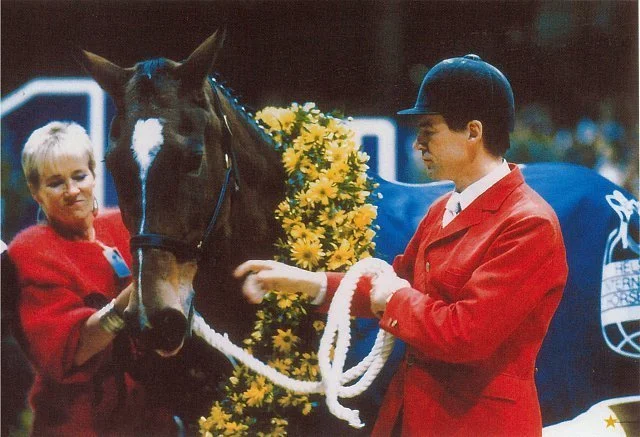
Monday Morning retired in spectacular fashion. Pictured are horse owner Tutu Sohlberg and Christopher Wegelius. Photo from the book Helsinki International Horse Show – Memories of the years
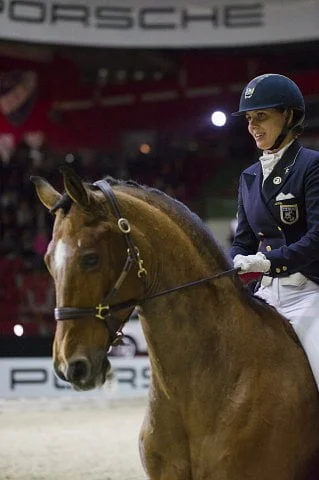
Solos Lacan and Eevamaria Porthan Broddell. Photo © Satu Pirinen
Horse Show Buildings Ltd, or HSB for short, was established in 1988 primarily to provide the infrastructure for the Helsinki Horse Show. Its activities included all construction work from stables to the stables in the dressage area and VIP facilities. HSB’s members were keen horse enthusiasts.
HSB was a personal team that worked together for years. During the Games, they celebrated their members’ anniversaries in style with sparkling wine and strawberry cake and made annual trips to interesting cultural destinations in Europe. There is a story or two to tell about the HSB – its history is full of amazing stories.
The name Mafia has come from Horse Show Event Director Tom Gordin, because whenever a concerned person asked how things were going, the answer was: WE do, WE know.
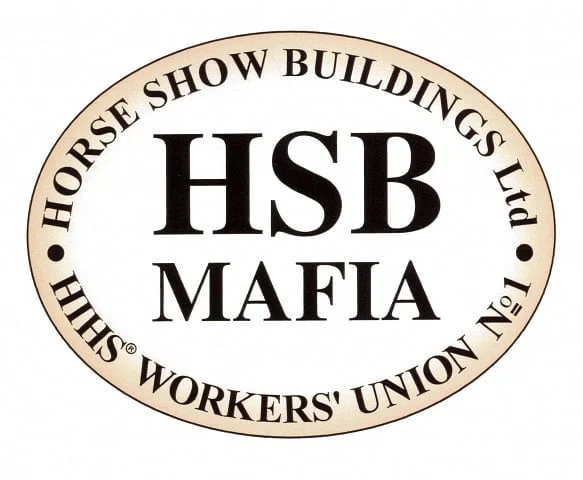
Since its inception, the Horse Show has received a generous and positive response from the media. TV coverage was guaranteed by a long-term agreement with YLE / FST even before the first competition.
The exceptionally high and positive media coverage was a phenomenon that remained permanent. The number of newspaper articles grew rapidly to over 400 per year. Every year we still closely follow all Horse Show-related articles and TV and radio broadcasts.
Of course, the publicity has not always been laudatory or positive. There have been occasions and periods when, for one reason or another, the tone of the stories has been highly critical. But we have survived all the criticism, learned from it and moved on.
